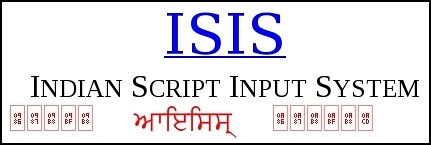
Ever visited a web site, like the one pictured above, and saw a bunch of (Unicode) blocks instead of the text you expected? Install support for the language you want on your Linux host, just like I did for the above-pictured Punjabi.
Debian Linux Installation
If you are running a Debian Linux system, use apt-get.
# apt-get install ttf-indic-fonts
Red Hat Linux Installation
If you are running a Red Hat or Fedora Linux system, use yum.
As a Bash Script
for indifont in Hindi Punjabi Tamil Telugu Kannada Malayalam ; do
yum -y install "@${indifont} Support"
done
Individually
yum -y install "@Hindi Support" yum -y install "@Punjabi Support" yum -y install "@Urdu Support"
As an aside, this also works if you want support for Chinese and other languages.
Installed. Now What?
With the fonts installed, you can at least surf sites in Indic scripts and see readable text. But, what if you want to write in Hindi (or other language)? You could certainly look up the proper Unicode numbers, but that is tedious and unnecessary. For Hindi, I recommend using Hindi Kalam, a simple interface where you write in transliterated English; Roman alphabet characters entered on the left pane display the Hindi equivalent on the right pane. Once you have made minor adjustments to get the desired output, simply copy and paste the right pane content into your application, be that Facebook, Twitter, et cetera.
While I have not used the application, I have heard good things about ISIS, the Indian Script Input System.
Best of luck to you.
No comments:
Post a Comment